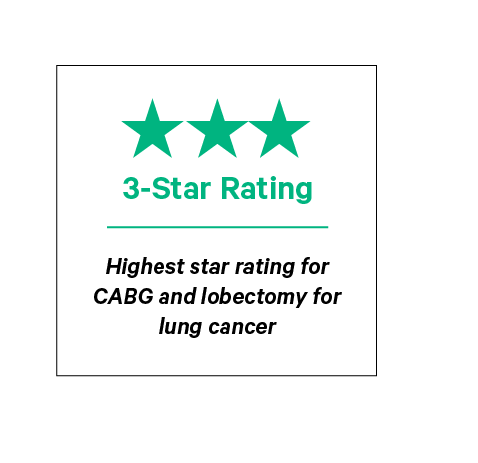Aortic stenosis is a narrowing of the aortic valve that prevents the valve from opening fully, which reduces blood flow from your heart into the main artery to your body (aorta) and onward to the rest of your body.
Causes of Aortic Stenosis
- Though aortic stenosis can be present at birth due to a congenital heart defect, the disease usually develops later in life as a result of accumulation of calcium deposits that narrow the aortic valve.
- Another potential cause is rheumatic fever, which may develop after scarlet fever or strep throat. Rheumatic fever isn't common in the U.S.
Aortic Stenosis Symptoms
These are some symptoms you may experience if you have aortic stenosis:
- Chest discomfort
- Difficulty breathing
- Dizziness or weakness with activity
- Palpitations
Symptoms may not appear until the later stages of the disease.
Treatment for Aortic Stenosis at RUSH
If you have a severe case of the disease or if your symptoms are troublesome, specialists at RUSH can draw on their many years of experience to help. Your doctor may recommend one of the following treatment options:
- Medications may be used to treat other conditions, such as high blood pressure or high cholesterol, to keep your heart from working too hard and putting strain on the aortic valve.
- Surgery may be needed to replace or repair your damaged valve. Our cardiac surgeons specialize in the latest techniques to treat aortic stenosis, including thoracoscopy, endoscopy and robot-assisted surgery.
- Transcatheter aortic valve replacement (TAVR), a procedure in which an artificial valve is placed without open heart surgery, is a minimally invasive option for all patients, including those who are not good candidates for traditional surgery.
- Valvuloplasty is a minimally invasive procedure to open a valve that has become narrowed. Your doctor will use a catheter to insert a balloon through an artery in your groin, thread it up to the narrowed valve and inflate it to open the valve.
- Rush's cardiac rehabilitation services' therapeutic outpatient program can help you lead a healthier, more active life again after heart problems or procedures.
RUSH Excellence in Aortic Stenosis
- Among the best in the nation: U.S. News & World Report ranked RUSH University Medical Center among the best in the nation for cardiology.
- Accurate diagnosis for most effective treatment: Adult structural heart disease specialists focus on aortic stenosis, including helping to develop new treatments, so they have a better understanding of how to diagnose and treat this condition.
- Expert collaboration: At RUSH University Medical Center, many of the procedures used to treat aortic stenosis take place in our interventional platform, where procedures are centralized to allow specialists to collaborate more easily and ensure convenience for patients and families.
- Cardiac rehab, close to home: Through RUSH's cardiac rehabilitation services' therapeutic outpatient program, we will create a personalized course of treatments and services to help you get back on track after a heart attack or bypass surgery. Located at RUSH Oak Park Hospital and RUSH Copley Medical Center, the program provides education, counseling to address emotional barriers, exercise plans to build strength and endurance, and support needed to make any lifestyle changes to prevent future cardiovascular issues.


